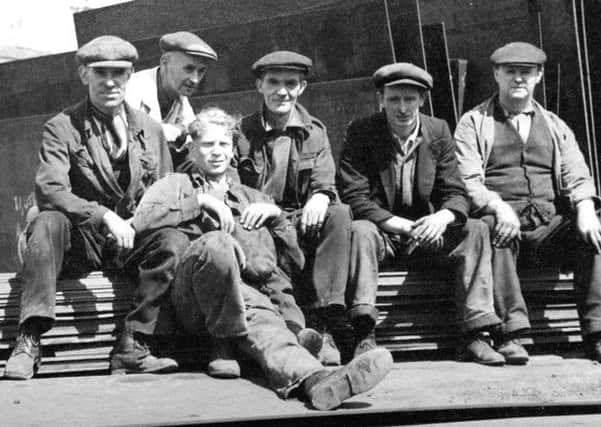ON THE WATERFRONT: When welding replaced rivets


In 1933, introductory courses in electric arc welding by Sunderland Education Authority proved a great success.
After World War Two, as welding began to supersede riveting, it was recognised that the latter was becoming a dying trade. To offset risk of redundancies among riveting squads, unions called for the men to be retrained as welders.
Advertisement
Hide AdAdvertisement
Hide AdThis request was supported by the Wear Shipbuilders’ Association, whose members worked closely with unions to develop training schemes.
Wound up in 1977, the Association had been established in 1853 to protect the trade and interests of local shipbuilders. It worked hard to cultivate good industrial relations between employer and workforce, especially when ushering in of modern practices and techniques led to friction.
Welding instructional courses began at several Wear shipyards in July, 1948, with William Doxford and Sons afterwards opening the river’s first welding training school. Other yards followed suit, with Sunderland Education Authority having already launched new three-year welding courses at Sunderland Technical College in 1944.
In October, 1949, it was announced that the Wear Shipbuilders’ Association was to break new ground by introducing a mobile X-ray unit to examine welding in ship construction.
Advertisement
Hide AdAdvertisement
Hide AdAlthough other North East shipyards already maintained static X-ray machines, no such facility existed at Sunderland.
Said to be the first time that a mobile unit had been used in British shipyards, special X-ray equipment was installed in a custom-built van supplied by Sunderland coachbuilders Adams and Gibbons Ltd of Paley Street. Built on a standard Bedford passenger chassis, the van also housed a modern fully equipped darkroom.
“She took some building,” remarked Adams and Gibbon Coachbuilding Manager Eric Wilkinson. “When we got the job, we had very little to work from. There was only one similar unit in existence in the country,” he said.
After being demonstrated at the Deptford yard of Sir James Laing and Sons on December 21, 1949, the unit officially entered service the next day. Its purpose was to develop the highest possible standards of welding and as an aid to the training of welders.
Advertisement
Hide AdAdvertisement
Hide AdThe X-ray equipment was capable of penetrating mild steel of up to two inches in thickness, with qualified radiographers being able develop films and produce radiographs as soon as an exposure had been made.
Working to a regular schedule of visits, the unit’s value was quickly exploited by the Wear’s eight shipyards - Bartrams, Austins, Laings, Doxfords, Shorts, Pickersgills, Thompsons and Crowns. In an emergency, it could quickly be diverted to where it was needed.